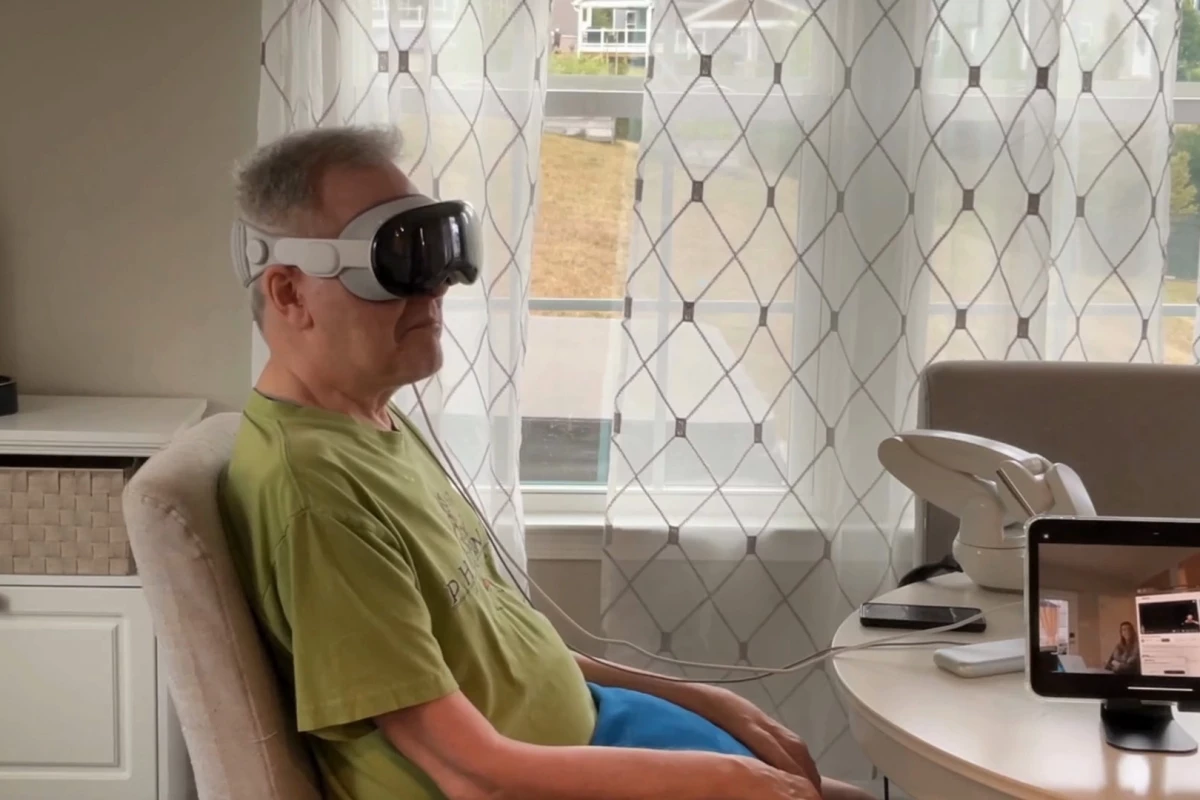Rather than cut a chunk of skull away to install a brain-computer interface like Neuralink, Synchron feeds electrodes up through the jugular vein to the motor cortex. Now the tech has enabled an ALS sufferer hands-free control of Apple's Vision Pro.
The term brain-computer interfaces (BCI) pretty much says it all. They're devices designed to place electrodes next to certain areas of the brain to convert electrical activity into signals that can be used to interact with computers and other devices.
As such, they have huge potential for transforming the lives of folks suffering from spinal injuries, motor neuron disorders and so on. But to do that, they need to get right inside a patient's head – which can involve invasive surgery to remove part of the skull. Synchron's technology takes a different approach.
The company's Stentrode starts its journey with a "minimally invasive endovascular procedure" that gets the BCI into the body via the jugular vein. From there it's directed through the brain's blood vessels until it gets to the motor cortex. Then it's expanded so that a bunch of electrodes are positioned right next to a target brain area.
"Once implanted, it is designed to detect and wirelessly transmit motor intent out of the brain, intended to restore the capability for severely paralyzed people to control personal devices with hands-free point-and-click," explained the company.
Towards the end of 2021, an Australian patient with amyotrophic lateral sclerosis (ALS became the first person to send a text message via Twitter (now X), and went on to use the system to reconnect with family and business colleagues through emails. We discussed the technology with the company's Professor Nicholas Opie last year following successful Series C funding – which goes into more detail about the Stentrode tech, how patients learn to use it and more.
Now a recipient in the US has become the first in the world to use an Apple Vision Pro AR/VR headset – which launched last June – through a combination of eye tracking and his mind. Users of the system usually interface with the spatial computer with their eyes, voice and hands to select items and control the show. But the loss of upper limb function in the 64-year-old ALS sufferer means that such use was impossible.
Thanks to the Synchron BCI, the patient has been able to play the card game Solitaire, watch Apple TV and send text messages by controlling inputs using his direct thoughts. You can watch a video overview of the achievement by clicking on the Businesswire link below.
"BCI is a platform to re-connect people with injury or disease back to the fast-moving consumer technology landscape," sad Synchron founder and CEO, Tom Oxley. "Vision Pro is a powerful system, but it relies on the use of hand gestures to exert control over the UI. We are sending control signals directly from the brain to replace the need for hand gestures. We are moving towards a new Bluetooth standard for Human Computer Interactions that don’t require touch or speech. This is a critical unmet need for millions of people with paralysis."
Source: Synchron via Businesswire




